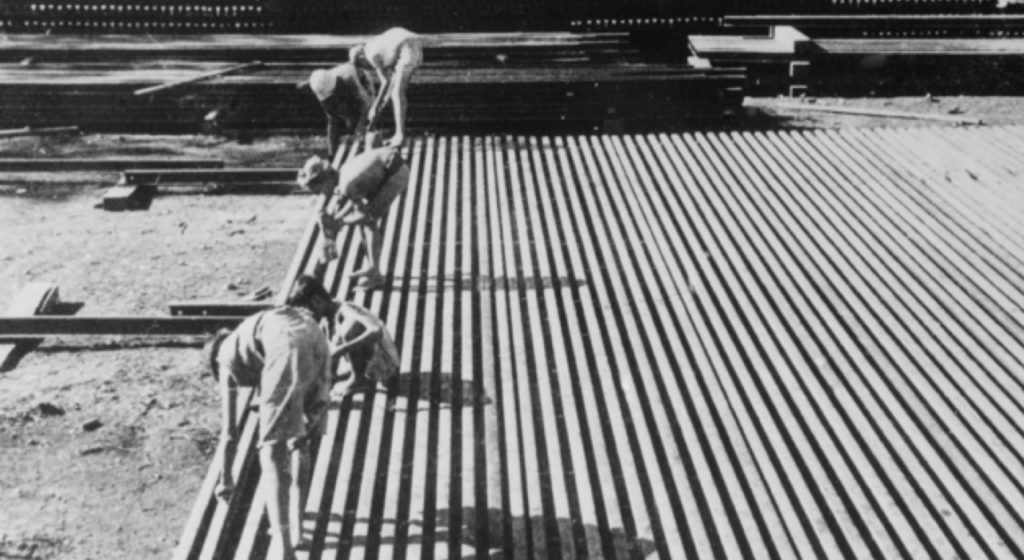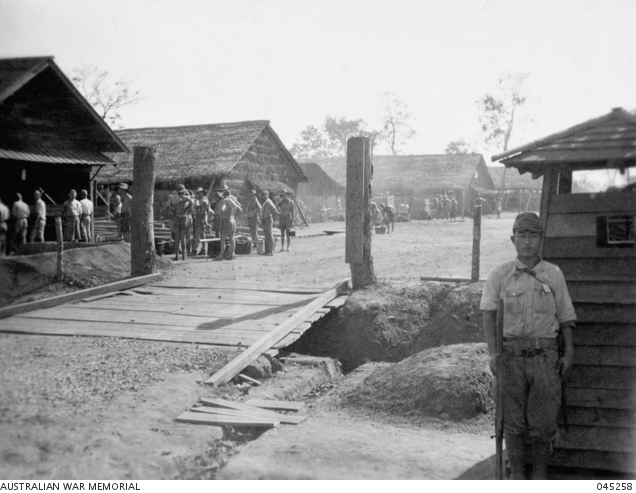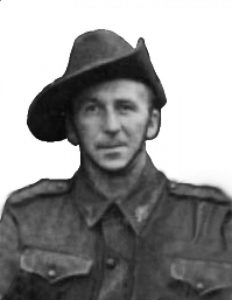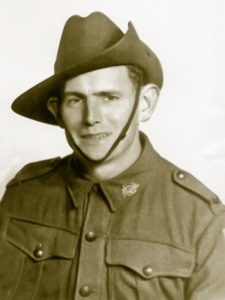Thanbyuzayat - Burma
Thanbyuzayat Base Camp 415k – Burma
Beginning of Burma-Thai Railway
POWs knew this camp as Thamby
Thanbyuzayat (pronounced Tunboozyat) was originally named Than Byu Zayat – translates to mean ‘white-iron’ resting place. A hut or rest house built by devout Buddhists many years before 1939-1945 war as accommodation for passing travellers. Built with a corrugated iron roof with open sides and a dirt floor it afforded a pleasant resting place for weary travellers. Thanbyuzayat was on the railway line south from Moulmein.
At the same time, work ceased on the railway line which had been intended to link Moulmein (64 kms away) with Bangkok.
It became the terminus for the Japanese railway line built during 1942-1945 by POWs to supply essential labour and supplies to Japan’s frontline in Burma. ‘Thamby’ as it became known by POWs became the Japanese Administration Headquarters and POW Base Camp for Branch 3. The first POWs reached ‘Thamby’ via Moulmein by the end of September 1942. Almost all POWs were Australians at Thanby under CO Varley.
In January 1943 a hospital Camp was organised for sick POWs, then numbering about 600. In March the sick were transferred to a new hospital camp at Reptu because of a air bombing raid just a few kilometres away. In May Reptu Hospital Camp was closed and the sick were transferred back to Thanbuzyat.
With the hospital camp and admin situated close to the railway marshalling yards and workshops they were subjected to Allied bombing raids in June there were numerous casualties, causing the camp to be evacuated and POWs and sick were marched to camps further down the line where hospitals had been set up.
Thanbyuzayat continued to be used as a base for POWs arriving to reinforce work parties.
Below: The railyards so close to Thamby POW Camp. Fury was killed during an air raid in 1943.

Ramsay Force arrived at Thanbuzayat staging camp 18 December 1942 and were met by the Commandant, Lt.-
Col. Y. Nagatomo who was described as ‘strutting, pompous Nipponese, small of stature, loud of mouth and full of scathing sarcasm.’ He told them ‘you are the remnants of a rabble army – you don’t even know how to dress properly. We intend to build this railway even if it has to go over your dead bodies.’
Ramsay Force had suffered 9 days sailing in appallingly cramped conditions from Singapore to Mergui where they worked on the aerodrome. Monsoon season arrived and the POWs worked hard in the rain. Rations had been meagre, but they could purchase a few eggs and bananas. They had been under guard of former naval men who happily dished out punishment with some degree of leniency. However Tavoy was very different. This was what they had to look forward to.
On the morning of 20 Dec 1942, Ramsay Force was ordered to prepare to move to Kun Knit Way 26 km camp, fortunately transport had been provided not like the forced march from Ye when the sick had also marched.
By January 1943 Thanbyuzayat was recognised as a base hospital because there were 1,600 patients admitted.
The hospital was located opposite the railway station and workshops.
This was a base hospital Camp for F Force during the time they were working on the line. Dr. Bruce Atlee Hunt was appointed Senior Medical Officer (he was moved around to other camp hospitals as were all doctors) and in mid 1943 his staff numbered 192 including all volunteer medical orderlies. There were a total of 11 doctors in F Force. Hunt had virtually no medical supplies or equipment.
In early March 1943 30km Reptu Camp was established as a hospital camp however was ordered closed by the Japanese as quickly as it was opened and patients transferred back to Thanbyuzayat Hospital Camp.
In the early afternoon on 12 June 1943 patients at this base hospital camp were thrilled to hear Allied planes approaching, believing they were headed towards Bangkok. A similar experience had occurred several weeks earlier and the POWs who were able, ran outside to see the planes and waved excitedly.
On this day the men suddenly realised the planes were flying low and could see the formation breaking off into three groups. Filled with terror they realised their Camp was the target. The Allied Forces had no means of identifying their POW Camps which accommodated 3,000 men. The Allies were targeting railway workshops and marshalling yards. The POW Camp and hospital was located next to extensive rail yards filled with rolling stock and supplies for Japan’s fighting forces in northern Burma.
Among the injured were 5 Australians deaths when two bombs went astray, falling in the camp compound. That evening every walking man made their way to the cemetery to pay tribute to the Australian, English, American and Dutch who had died. The three Padres conducting the services included Father Corry, 2/4th MGB.
Major Varley and senior officer’s pleas to the Japanese to be permitted to identify POW huts were met with negative answers.
Requests from senior POWs met with no response from the Japanese resulting in feelings of hopelessness amongst the men. Knowledge of an ammunition dump nearby worsened their fears.
Finally the Japanese officer in command, Nagatomo granted permission for a system of slit trenches be built beside each hut. The men and patients were drilled about the procedure to take place next time.
Next time was 3 days later. Another bombing raid occurred on 15 June and this time 13 Australians died and double this number wounded. Allied planes flying above at 2,000 feet were fired at with Japanese machine guns, rifles and pistols!
Terrified by this undisciplined shooting the men had taken to the trenches fearing being hit by Japanese fire. Then came the assault from the air lasting an hour. Huts were bombed amidst the chaos. It must have been a terrifying experience for the helpless and vulnerable POWs, especially being attacked and bombed by their ‘own’.
That evening the funerals were held for the dead, again attended by all POWs including the very sick who could stagger or walk to pay their respects to their mates.
Varley approached the Japanese asking permission to travel to Rangoon to make a broadcast to the Allied Forces to advise the number of POWs at the Camp. This was refused.
On 17 June Nagatomo ordered the evacuation of hospital patients. This immediate evacuation of 3,000 sick men to disused Kendau 4.8km, Wegale 8km and Alepauk 18km Camps whilst Japanese headquarters were set up at 4.8km Kendau Camp located within the Moulmein rubber plantation.
The 8 km march to Kendau 4km campsite was to be on foot, each man carrying his personal belongings and whatever equipment the camp required, walking and staggering in batches of 50 men.
The advance party arrived to find only one hut with a roof. The weather and local scavengers had ravaged the camp leaving 10 huts roofless but with atap sides. It was the height of the monsoon season, 1,000 exhausted, sick men slept in the rain wherever they fell. The first job of the volunteers was to prepare latrines.
Major Colin Cameron from the 2/4th called a meeting of the POW officers. They had not one single doctor amongst them and an entire camp needed to be built. Worse, there were very few fit men amongst them. Major Cameron proved to be a driving force and inspiration to the men. The cooks established makeshift kitchens ensuring the men never went without a single meal.
For those remaining at Thanbyuzayat their Japanese guards well before schedule, ordered the sick out of their huts and into the jungle and rain to take shelter from the daily Allied bombing raids. The POWs were humoured to have their guards to first head for the tallest of trees and then beckon (afraid to yell) them to join them for safety’s sake!
There was one good thing about spending one’s time hiding out in the rain in the jungle avoiding Allied bombing raids – the POWs finally had an opportunity to trade with the locals without the guard’s knowledge.
There was great relief when Nagatomo agreed to transfer some of the seriously sick to Alepauk 18km camp. Within a few weeks all the sick had been moved to Reptu 30 km camp – some provided with transport and for some marching were able to load their gear on transport trucks.
The railway yards, rolling stock and hospital camp at Thanbuyuzat were now wrecked or demolished. The POWs could only regret the deaths of so many of their own. Thanbuyuzat was now a ‘bad memory’
WX14226 Brazier, Arthur Amos Murray Lance Corporal, farmer of Kirup died18 March 1943 of bacillary dysentery aged 38 years. He enlisted AIF 6 June 1941and later joined ‘A’ Coy No 4 Platoon under Commanding Officers Lt.
Walton and Lt. Learmonth.
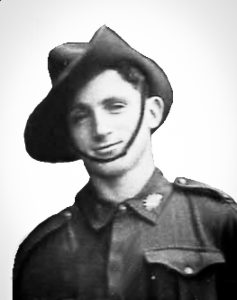
WX6632 Clarke, Samuel Lance corporal, died of dysentery 23 Jan 1943 aged 23 years. Born Essex England, Clarke enlisted AIF June 1940 later joining ‘C’ Coy 12 Platoon under Commanding Officer Mick Wedge.
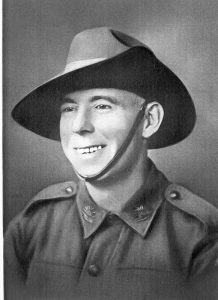
WX92790 Fury, Thomas Joseph b. Kalgoorlie 1907. Was AWOLat Fremantle, landed Java. Joined ‘Blackforce’ taken POW Java. Sent to work Burma Thai Railway with ‘A’ Force Burma, Java Party No. 4 Williams Force. Tom Fury tragically killed during an Allied air raid 15 June 1943 aged 35 years. Buried Grave No 59. Funeral service conducted by 2/4th MGB Chaplain F. X. Corry.
WX11744 Willamott, George Edwin died Thanbyuzayat 4 June 1943 of dysentery aged 32 years. Grave No. 46A.
George and older brother James Frederick Willamott together enlisted AIF 24 April 1941.
They both trained as a Fitters with 88th LAD, attached to 2/4th MGB.
When George departed with ‘A’ Force for Burma, Jim Willamott must have been unwell because he later left Singapore with ‘F’ Force to work in Thailand on the Railway. He died 6 months after George of dysentery at Kanachaburi 15 Dec 1943 aged 39 years. (it is of coincidence they each died of dysentery)
